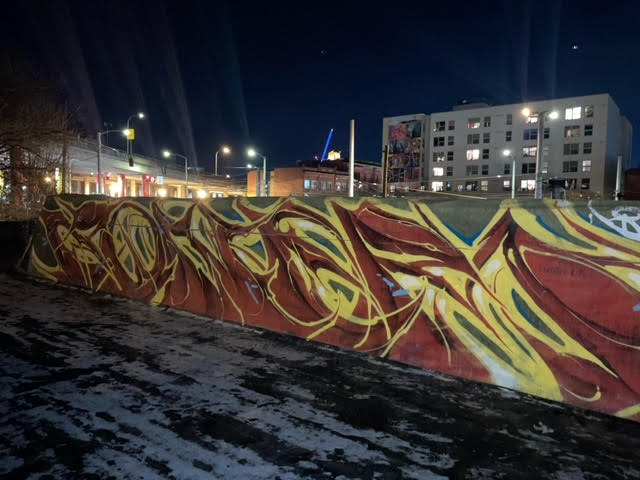Walking around downtown, Seattle is a lot of things. It’s fun, entertaining, and bright on the good days. But on bad days it’s frightening, depressing, and gray. Amongst the oppressive sky scrapers and water damaged posters, Seattle is not always very inviting. Many people point to vandalism for creating that kind of environment, as it adds to the run-down feel when one sees businesses getting tagged or defaced. Public property getting damaged makes people upset. It’s easy for a Seattleite or tourist to immediately dislike graffiti. It’s on buildings and street signs, spewing teens’ profane messages, covering the city with their half-assed tags.
But there’s another side to the coin. Beyond the tags, most people will see that in Seattle –and other big cities– that there lies the remarkable world of street and graffiti art. Murals that wrap around buildings, celebrity faces sprayed on otherwise ugly electrical boxes, and masterpieces hidden in alleyways.
These pieces are revered in Seattle. Some creators start in street art, allowing them to build their artistic careers from there.
Street art also allows children to see more beauty in Seattle. Asking students in West Seattle High School, it was obvious that they recognize the importance and value that graffiti can bring. Regarding the pros of graffiti, students have said they think “it’s pretty” and “very unique”.
But the most interesting idea I heard was from Edison Walsh: “Everybody reads and sees it without choice. It’s a way to get people to listen to an opinion that they can’t ignore.” This got my gears turning. Graffiti can’t be ignored and neither can its messages. I think that this is why a lot of people hate graffiti. One can’t ignore swear words on store windows or tags decorating subway stations. But you also can’t ignore political messages. A lot of graffiti downtown is political after Seattle had massive Black Lives Matter protests, and most recently protests for the Free Palestine movement. It’s no wonder that the messages of these protests end up spray painted on buildings and carved in lamp poles. So why do people still hate it?
Graffiti has always been an anti establishment art form. It has its roots in Rome, Greece, and even Egypt but has primarily been used as a form of protest. People used to carve critical poems into walls commenting on politics at the time. It hasn’t changed in thousands of years and is still used for the same reasons. It’s a way to get your message out into the world, whether it’s carved or painted. Graffiti is an important form of expression that gives voice to people who can’t say their opinions on TV, wearing fitted suits and surrounded by wealth. It gives the power of an unignorable voice to everyone. And in every vandal, in every tagger, and in every artist’s graffiti work, there is a layer of political debate. No matter if they are trained professionals or teens with a sharpie, they still get a voice in the world, and their art matters. Their voice matters.


